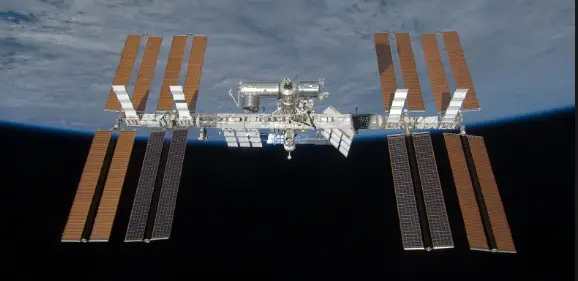 INTERESTING FACTS ON SPACE STATIONS !!!
INTERESTING FACTS ON SPACE STATIONS !!!
Space Stations are manned satellites.
On November 2, 2020, NASA celebrated the 20th anniversary of people living constantly on the International Space Station in outer space. It has never been left unoccupied, with a steady rotation of crews setting up home in the station.
The International Space Station (ISS) is the largest manned object ever sent into space.
The International Space Station orbits the Earth at a distance of about 400 km (250 miles).
The 420-tonne station sweeps over Earth at over 27,000km/h, making 16 orbits of our world every day.
As the ISS orbits Earth at a distance of just 400 km, it regularly needs a boost to stop it dropping back down to Earth, due to the atmospheric drag. This is provided by both, it’s on-board thrusters, and by the visiting international cargo vehicles, which boost the station’s altitude.
The ISS acts as a science laboratory, and a home to crews of astronauts and cosmonauts.
The International Space Station is powered by solar energy.
The first Space Station of any kind was launched into orbit by the Soviet Union on April 19, 1971, called the Salyut 1. Unfortunately, after a 23 day stay, the three Soviet cosmonauts started their journey home. As they approached Earth, air escaped from their capsule and they tragically suffocated. Unfortunately at that time, it was not compulsory for Soyuz cosmonauts to wear pressure suits. Pressure suits would have saved their lives.
Russian crew members are called cosmonauts. Crew members from Europe, Canada, Japan and the United States are called astronauts.
In 1973, the United States launched it’s first Space Station, Skylab into orbit. Three crews visited Skylab between 1973 and 1974, staying for 28, 59 and 84 days at a time. After these visits, Skylab was left to decay, due to lack of funding. In July 1979, Skylab re-entered Earth’s atmosphere and fell back to Earth, finding its way into the Indian Ocean, while some debris was also found in a sparsely populated area of Western Australia.
In 1986, the Russians launched the Mir Space Station, which orbited Earth for 15 years. Mir was home to space travelers from many countries. It was a huge success, hosting more than 23,000 scientific experiments.
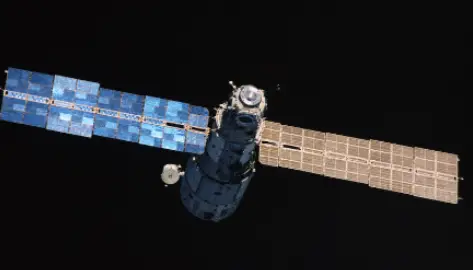
The success and experience gained in the creation of the Mir Space Station would later be used to develop the International Space Station (ISS).
Mir was designed only to last five years in orbit, but lasted three times it’s lifespan. After it’s 15 years of operation, Mir fell back to Earth, splashing into the Pacific Ocean.
The first part of the International Space Station was launched by a Russian rocket in 1998. Two years later, after more modules were added, it was ready for crew.
Every module in the ISS has a planned lifetime of 10 years, although they all have an ongoing program of maintenance, which should keep them going for much longer.
The ISS has a wastewater recycling system on board. Any water it can access, whether it comes from recycled shower water, residue from hand washing, people’s breath, astronauts sweat, and even urine is recycled to make drinkable water.
Presently, there are two Space Stations in orbit, the International Space Station (ISS) and Tiangong-2 of China. The ISS is manned all the time, unlike Tiangong-2.
The ISS is being built up in orbit by 15 countries. They consist of Canada, Japan, Russia, Belgium, Denmark, France, Germany, Italy, Holland, Norway, Spain, Sweden, Switzerland, the United Kingdom and the United States.
The ISS orbits Earth in about 90 minutes, so in a 24 hour day, it actually orbits Earth approximately 16 times.
When completed in 2011, the ISS’s dimensions were 108.5 meters by 72.8 meters.
A trip from Earth to the International Space Station takes up to two days.
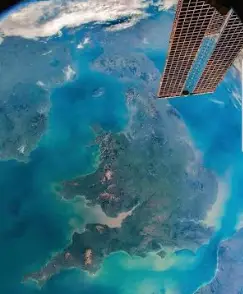
The solar energy on the ISS is necessary to power 6 laboratories and all the living space on board.
The ISS is powered by an acre of solar panels.
More than 50 computers control the systems on the ISS.
The crew and supplies are brought to the ISS by a space vehicle called the Soyuz. The Russian rocket launches from Baikonur, in Kazakhstan.
A rocket is what launches both people and objects into space.
The ISS can carry up to 6 crew members, it has two bathrooms, a gymnasium, and a 360° view bay window.
The 360° bay window is called the Cupola. It allows the astronauts to gaze as storms gather over Earth.
The ISS has been continuously occupied since November 2nd, 2000.
The cost to build and maintain the ISS so far is at around 100 billion dollars.
Astronauts on the ISS conduct scientific experiments, and observe Earth’s weather, while also learning to live and work for long periods in space. It will also help in the future to live on the moon and Mars.
The ISS can be seen from over 6,500 locations on Earth. It’s most visible in the sky at dawn and dusk.
The ISS missions normally last about six months.
NASA’s astronaut, Mark Vande Hei, is the record holder for the American with the longest stay in the International Space Station on a single mission, with as many as 355 days in his slate. The astronaut initially had a six-month contract with NASA to perform his tasks but was extended for another half-year stay at the station.
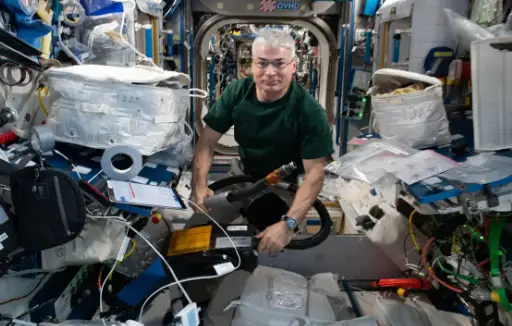
Crews in space stations have their own cabins. When they need a nap, they strap their sleeping bags to walls or ceilings so they don’t float around .
The first astronaut to tweet from space was Mike Massimino on May 12th, 2009.
So far, 242 individuals from 19 different countries have visited the International Space Station.
In 2002, NASA began investing in private space companies. SpaceX, owned by Elon Musk, was one of the first companies to receive money from NASA. Since then, SpaceX has developed a reusable rocket and launch system to significantly reduce the cost of space flight.
On Monday July 20th, 2020, at 5.00 p.m., SpaceX’s Falcon 9 launched from Cape Canaveral Air Force Station in Florida, with NASA astronauts Bob Behnken and Doug Hurley on board. Their missions included delivery to the ISS and to launch communication and Earth observation satellites. It was Americas first launch from their own country since 2011.
A SpaceX Crew Dragon carrying four astronauts docked with the International Space Station on the 15th November, 2020. The crew joins two Russians and one American aboard the station, and will stay for six months. The Crew Dragon capsule became the first certified by NASA since the Space Shuttle nearly 40 years ago. It is the first of what NASA hopes will be many routine missions ending U.S reliance on Russian rockets. The crew was comprised of three Americans- Michael Hopkins, Victor Glover and Shannon Walker-and Japan’s Soichi Noguchi. Mr Glover is the first black astronaut to make an extended stay at the ISS, while Mr Noguchi is the first non-American to fly to orbit on a private spaceship.
On 17th June, 2021, China launched its first crewed mission in five years, sending three astronauts to its new Space Station. They will spend three months at the Space Stations module “Tianhe” (Heavenly Harmony), carrying out experiments, testing equipment, conducting maintenance and preparing the site for future visits. China plans 11 missions to the Tianhe over the coming year to continue building the station and keep it supplied. The rocket used by the astronauts was a different type to the one that carried the Tianhe into space, which is slightly bigger than a bus.
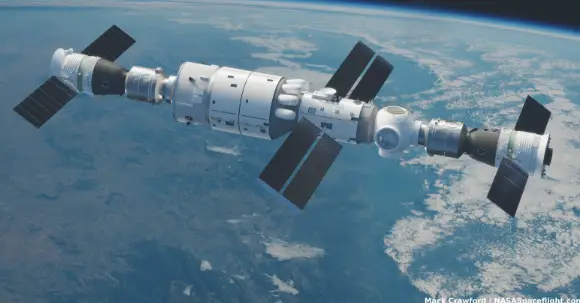
China is not involved in the ISS, mainly because the U.S objected to the secrecy of its space program and its close ties to the country’s military. However, China has been increasingly working with Russia and some other countries and its Space Station may actually outlast the ISS, which is near the end of its functional life.
NASA published plans in early 2022 for the future of the ISS, which could see the structure taken out of orbit in January 2031, and crash into an uninhabited area of the Pacific Ocean, near to Point Nemo, also known as a “spacecraft cemetery.” The laboratory will continue operating until 2030 following a commitment made by President Biden, but its long-term future is unsustainable.




